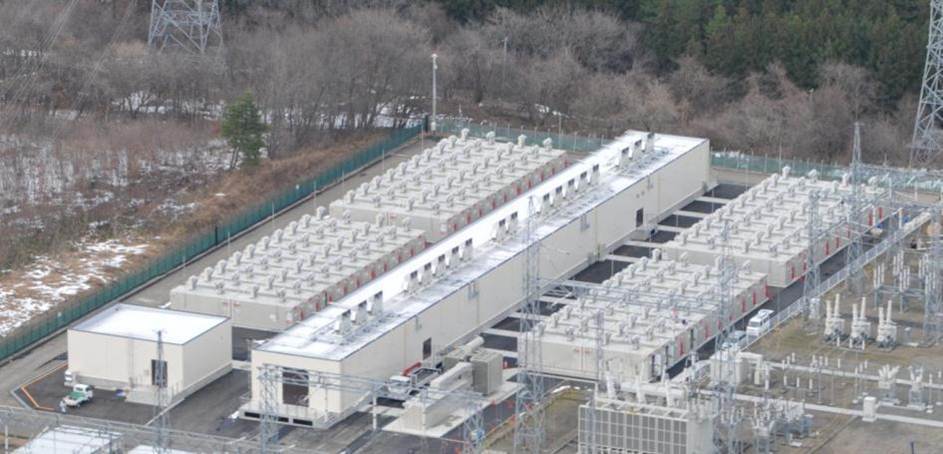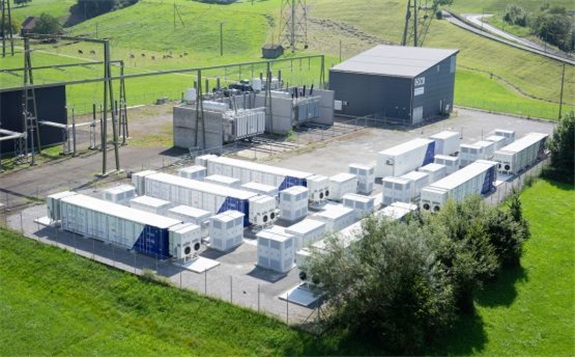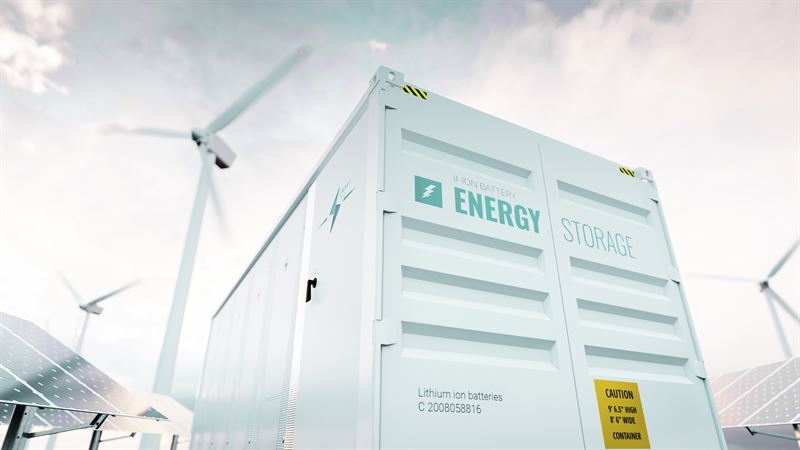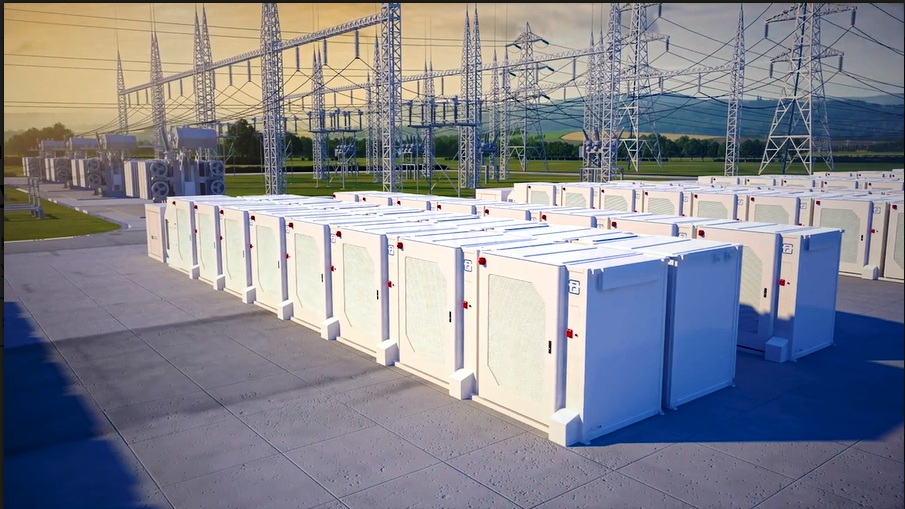Launched in 2021 at the COP26 in Glasgow, The Long Duration Energy Storage Council (LDES Council) is on a mission to replace the use of fossil fuels to meet peak demand by accelerating the market for long duration energy storage. In this exclusive interaction with T&D India, Julia Souder, CEO, LDES Council, gives a comprehensive understanding of the LDES Council – its formation, functioning and objectives. Given India’s massive thrust on renewable energy, long-duration energy storage would play a critical complementary role, and so would LDES Council, notes Julia Sounder. An interaction by Venugopal Pillai.

Let us start by understanding the LDES Council. When was this set up and what are the main objectives that it seeks to achieve?
The Long Duration Energy Storage Council (LDES Council) is the global voice of long duration energy storage (LDES), working to accelerate its commercialization and markets through education, advocacy, research, benchmarking, and strategic partnerships. The LDES Council is a membership-based organization, whose members work collaboratively to develop and share data, market intelligence, and analysis that creates critical information around the current state of the market.
The organization was formed by a group of innovative LDES leaders in the industry and was launched at COP26 in Glasgow, in 2021.
What is the strength of LDES Council in terms of membership, and what is the current geographic reach? Are Indian companies members of LDES Council as yet?
The LDES Council is made up of over 60 members in over 20 different countries. The strength in membership is due to the diversity of member technologies across four families of LDES (mechanical, thermal, electrochemical, and chemical), and the range of the entire ecosystem which includes innovative start-ups, equipment manufacturers, utility companies, and service providers.
One member is based in India – Reliance Industries, the largest public company in the country. It is a leader in the energy storage space, having invested heavily in LDES technologies to help India reach its target of 500 GW of renewable energy by 2030, under India’s Central Electricity Authority. There must be LDES on the system to ensure round the clock clean energy and LDES provides energy shifting to take excess renewables and store it to be used later when needed.
It is well appreciated that addition of renewable energy capacity will need complementing grid-scale energy storage. Please discuss.
While wind, solar, and other renewable sources have proven their viability, their intermittent nature poses a significant obstacle to achieving a fully renewable energy-based grid.
 India has very ambitious plans to install 500 GW of renewable energy capacity by 2030, up from the current level of 179 GW.
India has very ambitious plans to install 500 GW of renewable energy capacity by 2030, up from the current level of 179 GW.
India’s one transmission grid is a good machine. However with more renewables coming online, LDES will be vital as it can store energy from 8-10 hours, to days to weeks to months to seasons.
LDES can act as a dispatchable resource, serving as the backbone of a sustainable and resilient future, whilst accelerating the phase out of fossil fuels. It provides flexibility to deal with various ramp rates and curtailments and also provides ancillary services such as load following, inertia, frequency response and more.
Following India’s Energy Storage Week (IESW) in June 2023, it is clear India is one of the first movers globally on LDES, with a series of tenders for six hours of energy storage already released.
There are also projects being delivered on the ground, with plans in place for a 20 MW / 50 MWh thermal energy storage project in Phyang, Leh, Jammu & Kashmir, India, which will be commissioned this year and a 1 MW thermal storage energy storage project located in Talheti, Rajasthan, India.
It is expected that India could well exceed its ‘50% by 2030’ target for renewable energy generation, and continuing to focus on battery storage, including diverse LDES technologies, will be crucial in doing so reliably and sustainably.
Globally, what is the projected demand for energy storage, say over the next 10-15 years? What does the total current worldwide capacity look like?
According to the LDES Council’s Net Zero Heat report, we will need to deploy 8 TW of LDES by 2040 in order achieve our net zero goals. This will represent a 50-fold increase in comparison to the 30 to 40 GW predicted by 2025.
The LDES industry is in the lift-off phase of the developmental curve, proving the technology works and is here today for commercial use at the utility level. India can lead the scaling up of LDES by continuing to strengthen the regulatory frameworks for LDES.
As things stand today, which countries are taking the lead in grid-scale energy storage – in terms of capacity addition, and also with respect to technology development?
The world continues to push forward with ambitious renewable energy targets. In July, in an announcement at the 14th Clean Energy Ministerial, influential organisations including the International Renewable Energy Agency, the Global Renewables Alliance and COP28 Presidency, signalled their support for a new global renewables target which will triple the total installed capacity to 11 TW by 2030.
LDES will be essential in enabling us to achieve these increasingly ambitious goals.
Currently North America, Europe and parts of Asia lead the way on grid-scale energy storage. The US and China in particular have the most advanced markets, which are experiencing rapid growth due to strong backing from their respective governments.
 China is set to produce 1,200 GW of energy through wind and solar power by 2025, reaching its 2030 goal five years ahead of time, according to the report by Global Energy Monitor. However, with coal still holding sway as the dominant power source, and China trying to manage an outdated and inflexible energy grid, storage has become a crucial priority to deliver a secure energy future.
China is set to produce 1,200 GW of energy through wind and solar power by 2025, reaching its 2030 goal five years ahead of time, according to the report by Global Energy Monitor. However, with coal still holding sway as the dominant power source, and China trying to manage an outdated and inflexible energy grid, storage has become a crucial priority to deliver a secure energy future.
China has set goals to boost its non-pumped hydro energy storage capacity to around 30GW by 2025 and 100GW by 2030 – a more than 3000 percent increase from 3.3GW in 2020.
Chile is leading the way on LDES in South America by seeking to invest US$2 billion for energy storage projects beginning in 2026.
Similarly, Spain has taken the vital steps to incorporate LDES into its future planning, launching €280 million for energy storage, including standalone, thermal, and pumped hydro technologies. This, in addition to €160 million in grants for energy storage projects, aims to fund 600MW of projects to go online in 2026.
Australia and the UK are also two hotbeds of innovation, driving the development of LDES technology at the grid-scale. We have seen the UK run several grants to stimulate the market for LDES, with almost £70m handed out as part of the £1bn Net Zero Innovation Portfolio from the Department for Energy Security and Net Zero.
 In Australia, regional governments have a major role to play in ramping up ambition and delivery, with Victoria setting an interim target of 2.6GW by 2030. The target includes eight hour-plus LDES as well as shorter duration and was announced alongside an AU$157 million (US$101.77 million) support package for renewables and storage projects in the state.
In Australia, regional governments have a major role to play in ramping up ambition and delivery, with Victoria setting an interim target of 2.6GW by 2030. The target includes eight hour-plus LDES as well as shorter duration and was announced alongside an AU$157 million (US$101.77 million) support package for renewables and storage projects in the state.
It is crucial that governments around the world find the right balance of policy measures and financial support to create a marketplace for LDES which can enable its success and scalability. When delivered effectively, these measures can increase LDES deployment to deliver reliable renewable energy, storing and discharging power and providing ancillary services to help maintain a reliable electricity system.
India has also signed up to Mission Innovation, and became the first member country to establish a Clean Energy International Incubation Center (CEIIC) for supporting and promoting clean energy-based start-ups.
LDES provides an extraordinary opportunity for clean energy innovation and growth, and India is well set to capitalize on this to become a global market leader.
India has very aggressive plans for renewable energy capacity; the current official target is 500 GW by 2030. Given this, how do you see the role of long-duration energy storage?
India has some of the most ambitious targets globally for scaling up renewable energy. To achieve its target of 500GW by 2030, it will need to install four times the amount of renewable power by the end of this decade than was delivered between 2010 and 2020.
For this to be successful, LDES is essential. Peak demand periods can be impacted by renewable energy sources, which affect grid stability. By integrating LDES into the grid, India can address voltage fluctuations, frequency regulation, and grid congestion issues, thereby improving the overall resilience of the grid by regulating and balancing the supply and demand dynamics.
What is the current engagement of LDES Council with India? Do you see the growing role of LDES Council in the years to come?
The LDES Council recently attended the G20 Clean Energy Ministerial in Goa, discussing with world leaders the urgent need for long duration energy storage to achieve our renewable targets and decarbonization goals, as well as the need for 24/7 clean power which can be achieved with LDES. The LDES Council also works closely with the US Department of Energy who are supporting India through the U.S.-India Strategic Clean Energy Partnership (SCEP) to advance energy security, clean energy innovation and ensure clean energy access.
India has one of the fastest growing economies in the world, up 7.2% in 2022-23, and the country’s growth as an economic superpower is set to be matched by its growth as a renewable energy superpower. We look forward to continuing to work closely with policy makers and companies to accelerate the deployment of clean energy and underpin that growth with LDES.
What are the specific challenges that you foresee for India in attaining its grid-scale energy storage ambitions?
 Currently the largest hurdle for grid scale storage is policy and regulation. For LDES to thrive, India needs to create market-driven mechanisms including introducing dynamic pricing models and encouraging the procurement of ancillary services. It would also be valuable to see India commit to LDES targets in a similar vein to the new renewable targets, to create certainty for investors and developers.
Currently the largest hurdle for grid scale storage is policy and regulation. For LDES to thrive, India needs to create market-driven mechanisms including introducing dynamic pricing models and encouraging the procurement of ancillary services. It would also be valuable to see India commit to LDES targets in a similar vein to the new renewable targets, to create certainty for investors and developers.
Finally, increased financial support will be critical in accelerating LDES development and deployment. This can come in the form of tax breaks, subsidies, by drawing in foreign investment or from research and development grants.
What are the various LDES technologies available today, and which of these appears to be most sustainable?
There are four families of LDES technologies: Mechanical Energy Storage, Electrochemical Energy Storage, Thermal Energy Storage, and Chemical Energy Storage. They each have different benefits and trade-offs, so it is difficult to pick just one that stands out as the most sustainable.
These technologies can cost-optimally store power anywhere from half a day to a week or more in capacity, thereby filling a gap between today’s batteries and seasonal storage. In the long-term, LDES provides insurance against prolonged periods with low or no renewable power output, while in the near-term, these assets can potentially act as insurance against elevated power prices such as those electricity consumers are experiencing in many parts of the world today. LDES can therefore contribute directly to the triple imperative of the energy transition, driving greater security, affordability, and lower emissions of power supply.
In general, how do you see the growing role of LDES Council in helping the world meet its energy storage requirements?
The LDES Council’s mission is to replace the use of fossil fuels to meet peak demand by accelerating the market for long duration energy storage. This will cut global emissions and ensure flexibility in electricity supply, while providing flexible, affordable, reliable, and resilient clean energy solutions.
The LDES Council’s industry experts provide fact-based guidance to Governments and grid operators in the deployment of long duration energy storage to help achieve NetZero for electric grids by 2040. The LDES Council provides education and advocacy services to help advance the adoption of long duration energy storage and accelerate carbon neutrality.
All industrial images are for illustration only.


